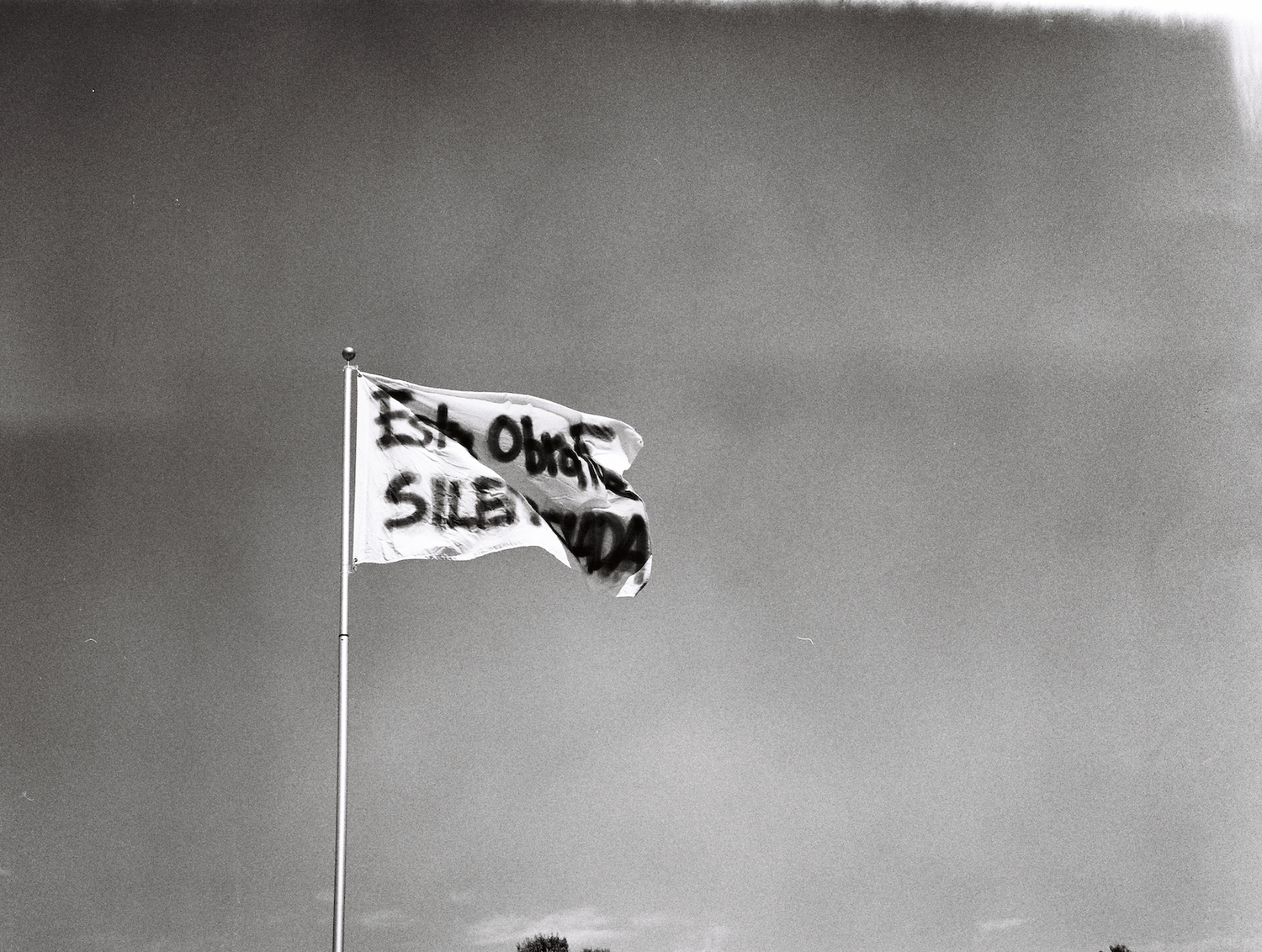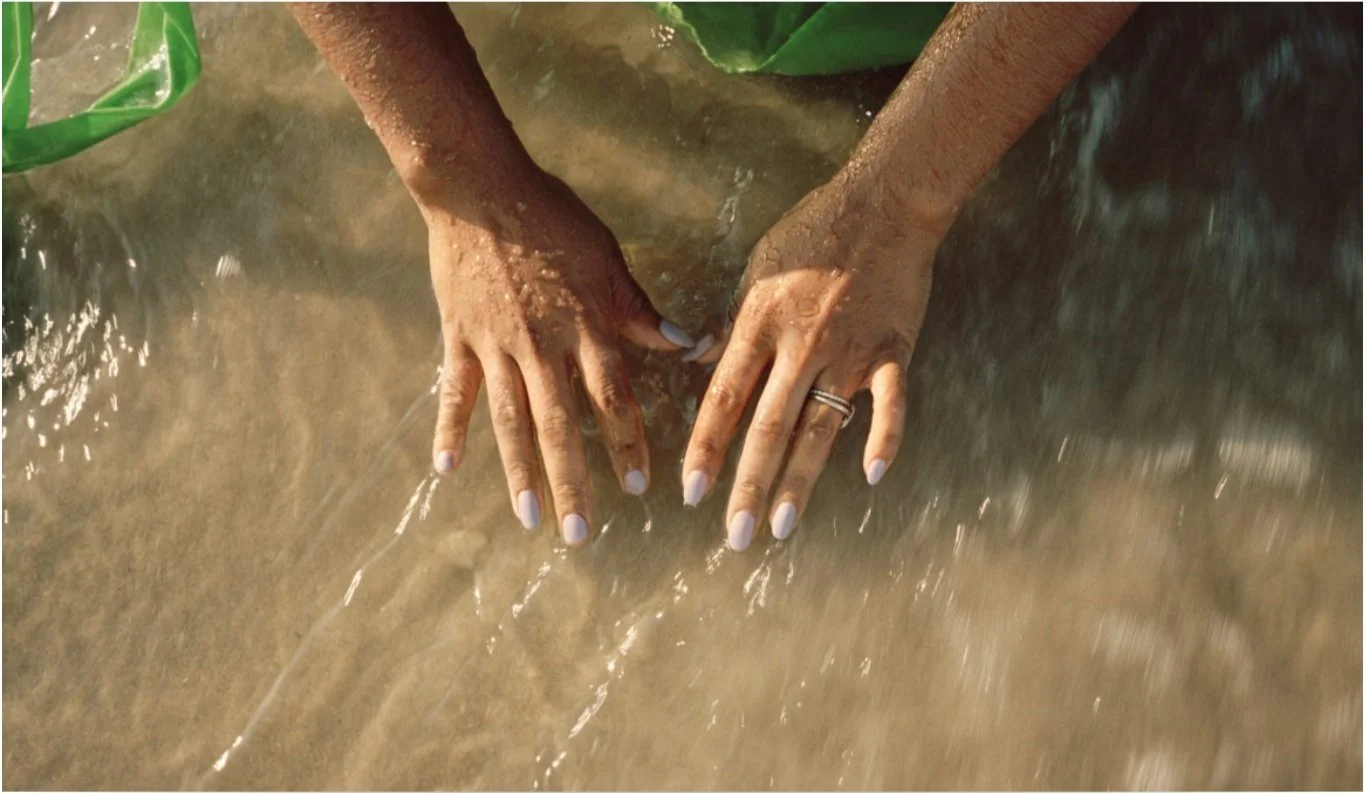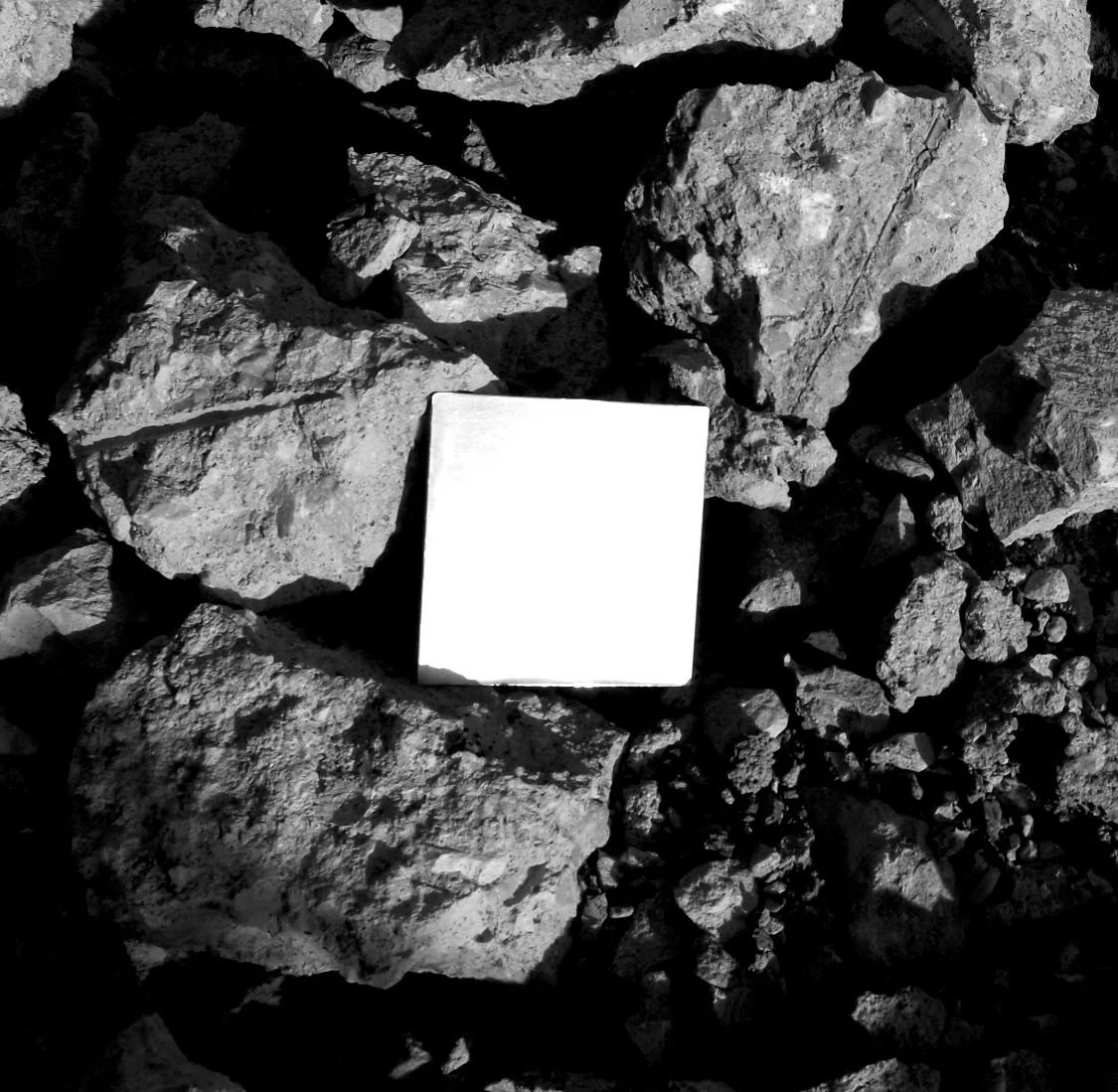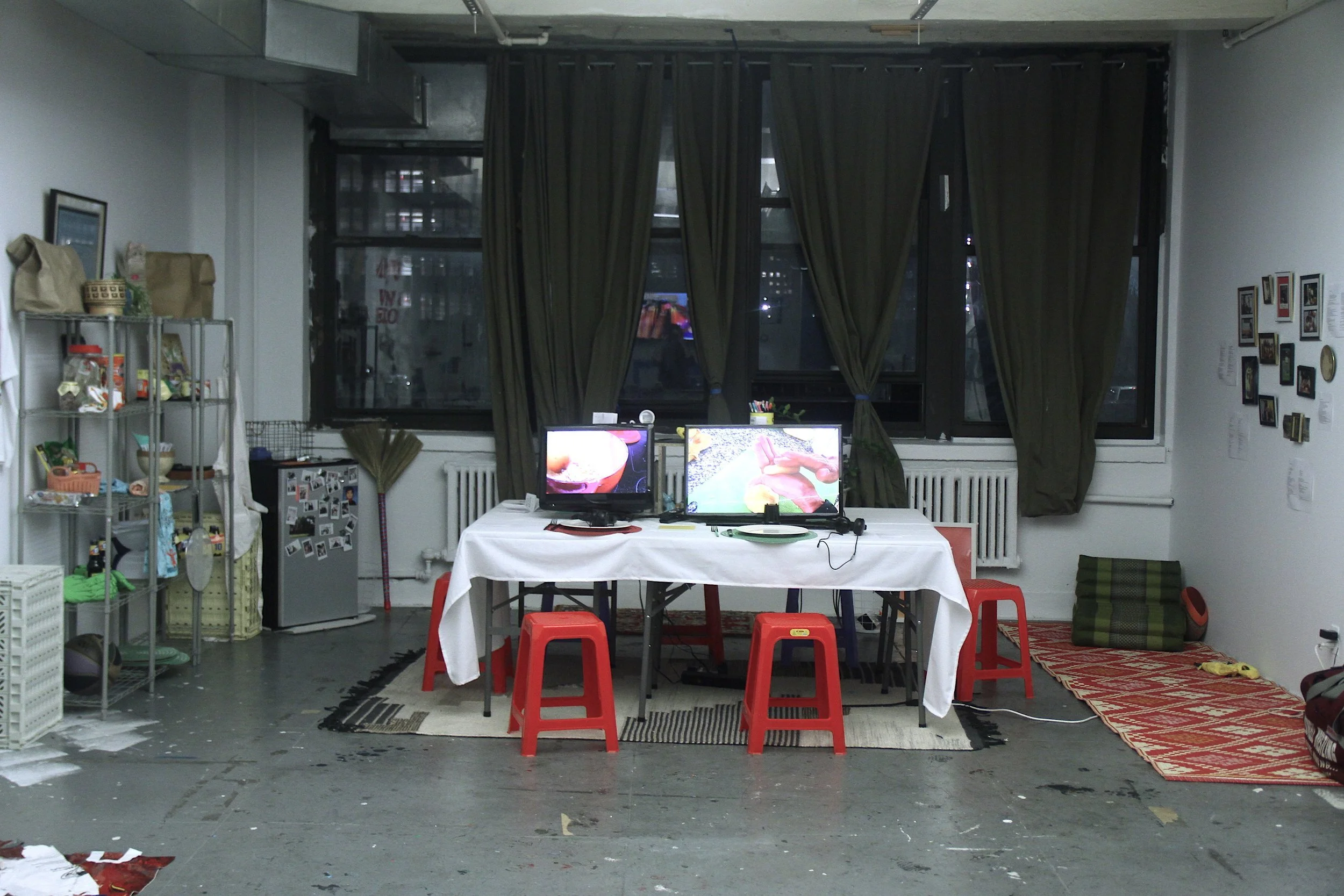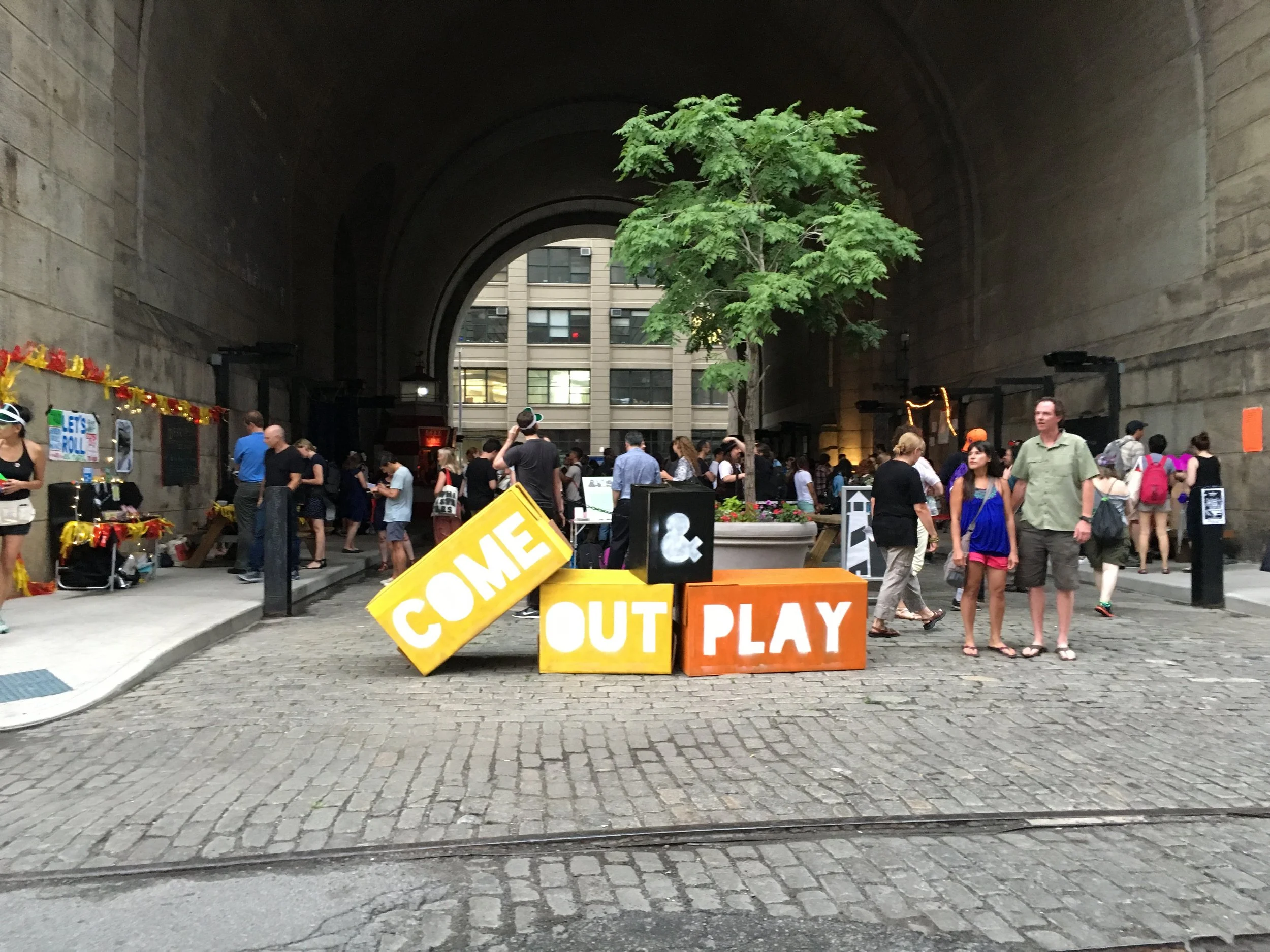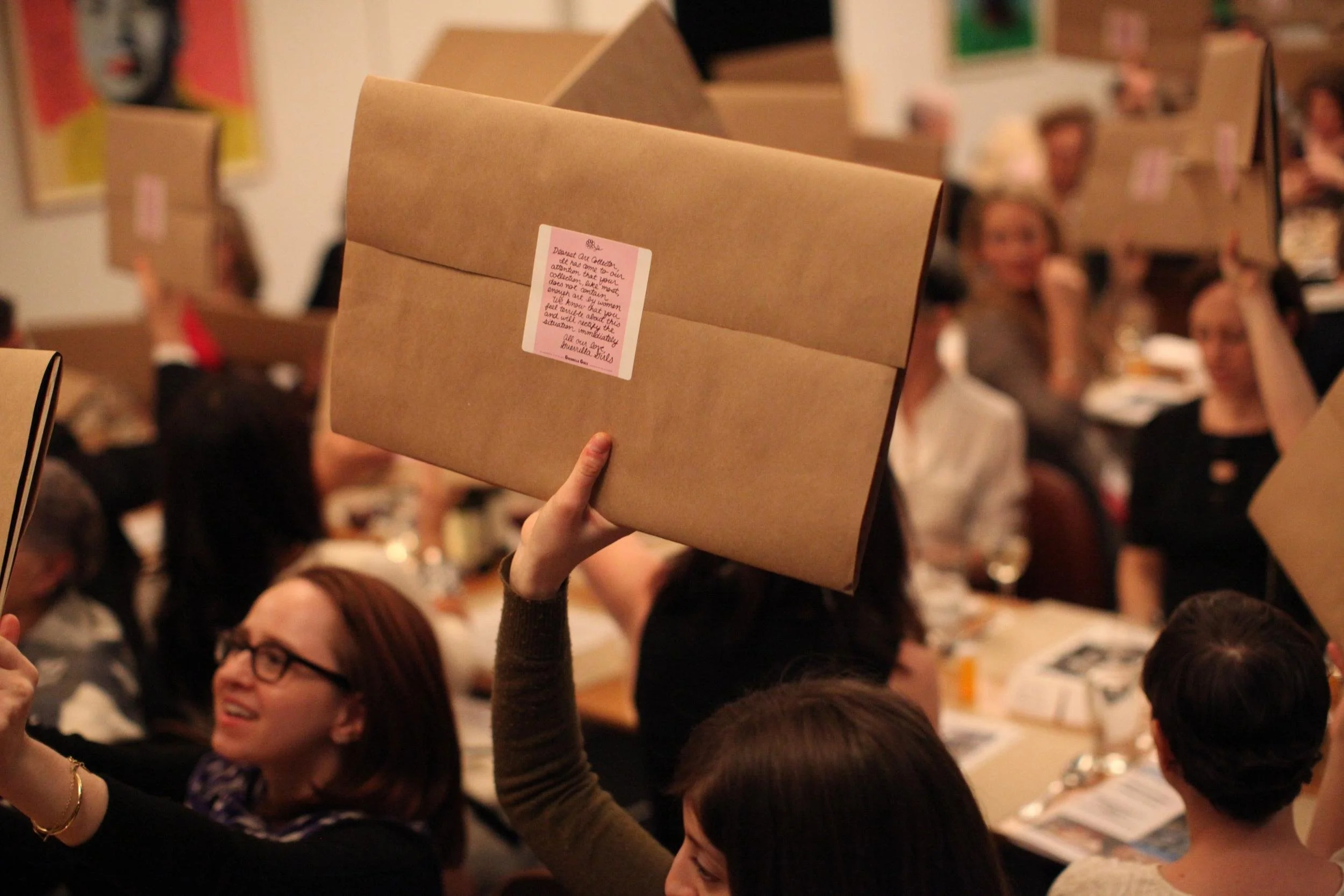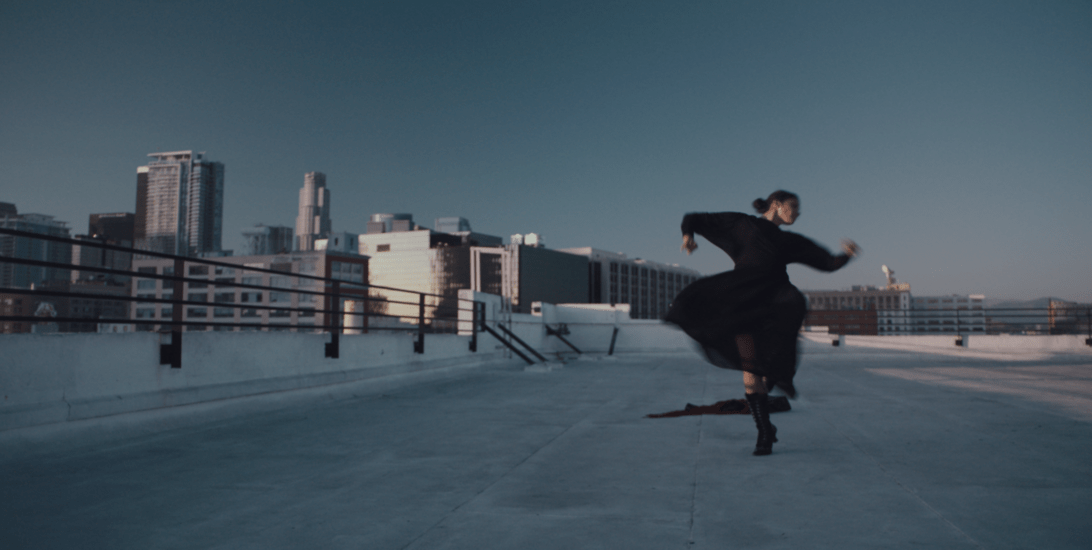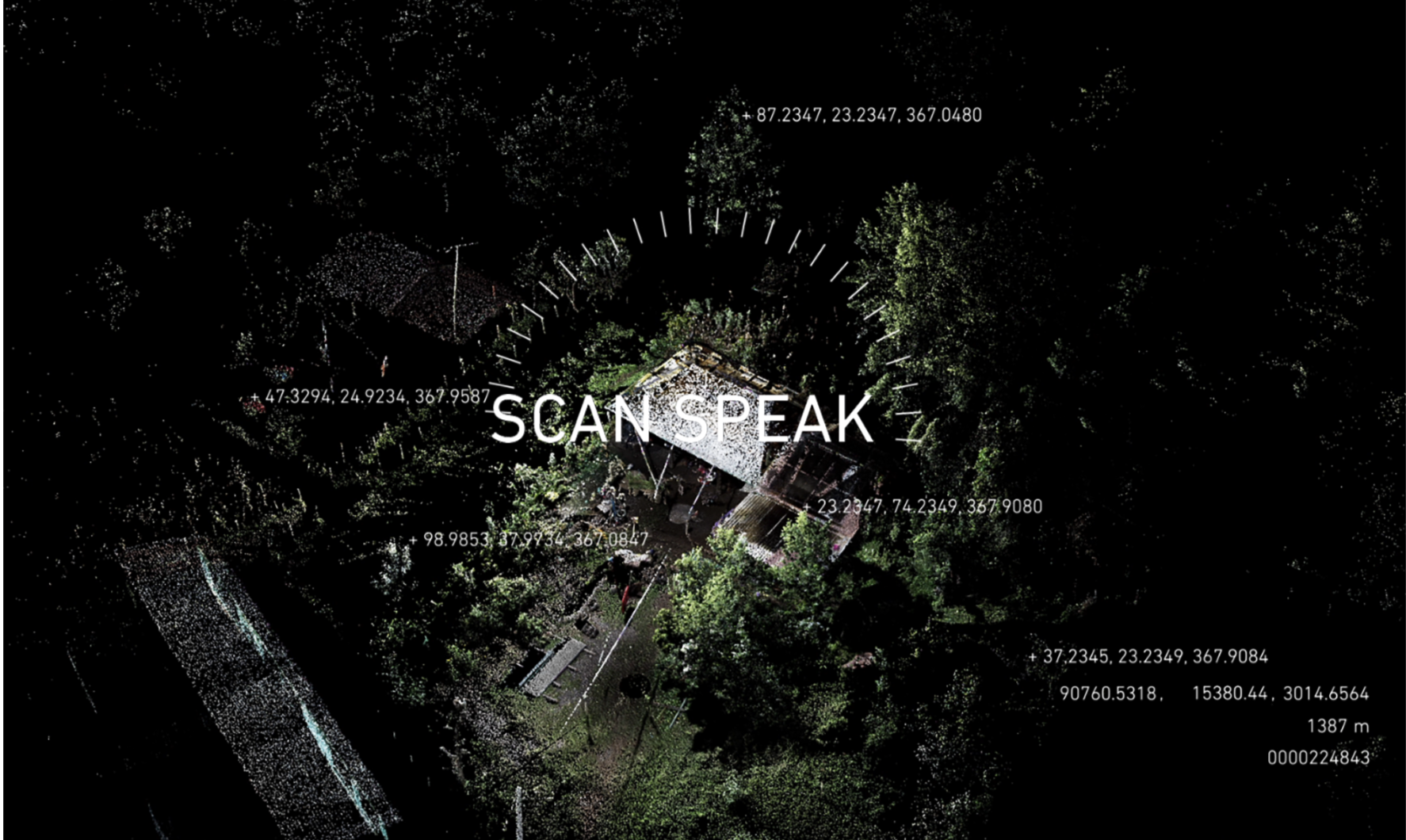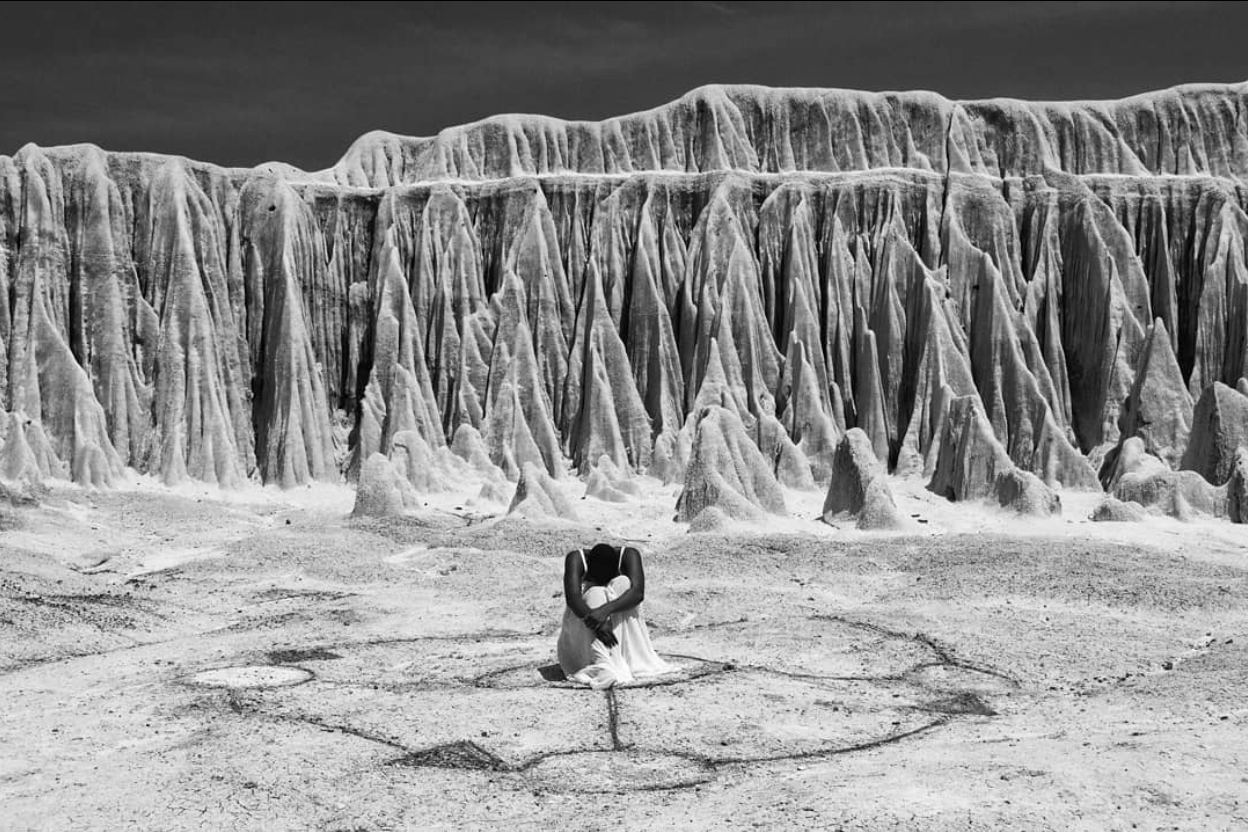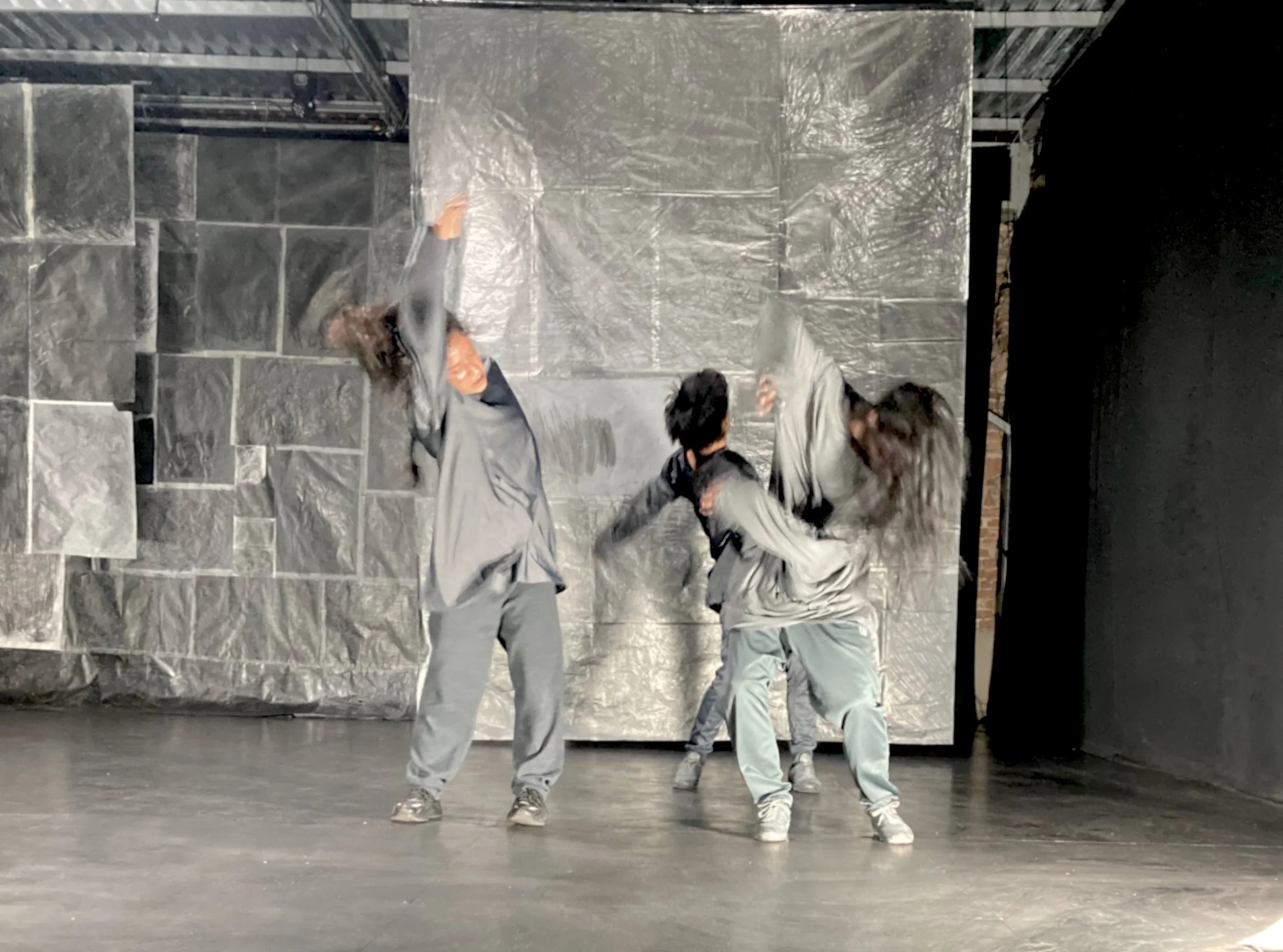Video still from Lotus Flower by current resident Yin Yin Wong.
Open call for SUR O NO SUR — 2024 Summer “School” & Residency — closes January 15
Sur o No Sur is a proposal for collective learning — an experiment in sharing and rethinking knowledge between us through guided practices, dialogues, and explorations. Modeled as a three-week residency-learning program held over the course of the summer, the program brings in a selection of visiting artists to act as guides and facilitators. Learn more and Apply here.
Workshop opportunity: Conversations on Print, May 2024
Open (and encouraged!) to artists working in all disciplines, this week-long workshop offers a collective experience to support the development of personal creative work through workshop visits, hands-on studio practices with various resources and techniques, and discussions exploring the local socio-political role of print. Hosted in collaboration with Marco Velasco Martínez (Espacio Pino Suárez), and Ana Hernández & José Ángel Santiago (Taller Río Blanco). Sign up here.
Meet our January-February 2024 residents:
We’re honored to have Yin Yin Wong (Netherlands) Ali Gali (Turkey) Isabel Rojas (Tlacochahuaya, Oaxaca) Ramón Llavén (Valle de Etla, Oaxaca) Sarah Hakani (New York), and Perseida Tenorio (Ixtaltepec, Oaxaca) with us for the next 5 weeks.
Each resident will offer a short public workshop during the week of January 29 - February 2. Open studios will be held on the evening of February 9.
Convocatoria para SUR O NO SUR 2024 - Escuela de Verano & Residencia — Cierra el 15 de enero.
Sur o No Sur es una propuesta de aprendizaje colectivo, que busca compartir y repensar el conocimiento a través de prácticas guiadas, el diálogo y la exploración. Modelado como un programa de aprendizaje que se llevará a cabo durante el verano de 2024, esta residencia de tres semanas reúne a un grupo de artistas visitantes para que acompañen la sesión como guías y facilitadores. Conoce más y aplica aquí.
Taller: Conversaciones de Grabado, mayo 2024
Abierto a artistas que trabajan en todas las disciplinas, este taller de una semana ofrece una experiencia colectiva para apoyar el desarrollo del trabajo creativo personal a través de visitas a talleres, prácticas de estudio con diversos recursos y técnicas, y debates que exploran el papel sociopolítico local del grabado. Presentado en colaboración con Marco Velasco Martínez (Espacio Pino Suárez) y Ana Hernández y José Ángel Santiago (Taller Río Blanco).
Conoce a nuestros residentes de enero/ :
Nos sentimos honradas de recibir a Yin Yin Wong (Holanda) Ali Gali (Turquía) Isabel Rojas (Tlacochahuaya, Oaxaca) Ramón Llavén (Valle de Etla, Oaxaca) Sarah Hakani (Nueva York) y Perseida Tenorio (Ixtaltepec, Oaxaca) en nuestra primera residencia del año.
The work of Miguel Cinta Robles (resident, March 2023) focuses on building models that merge agroecology and sculpture, as well as pedagogical strategies that enable socialization and learning in connection with the land.
His various projects include Colección Margarita Robles - a collection of natural objects; Domingo de Cerro, an initiative that facilitates walks, workshops and activations in the mountains of Oaxaca and across Mexico, as well as collaborating with his family’s syntropic reforestation and eco-construction project Terreno Familiar.
The ever-growing Colección Margarita Robles — named after Miguel's grandmother and frequent pseudonym — is a collection of natural objects encountered on his long walks. As described in his 2022 exhibition (seen above), the various objects in the collection “weave aesthetic relationships between them, as well as … between their characteristics and the experiences that viewers generate in relation to them.” The collection contradicts “ethnobotanical collections motivated by extractivism and instead confronts violent collecting with a collection created from the loving, affective walk of the hills and landscapes. Made up of taking gently and preserving, based on the principles of asking permission, borrowing, collecting carefully.”
Above, a poster sharing a guided walk with Domingo de Cerro last February, in collaboration with Julio Barrita and Pocoapoco. These walks integrate fields of biology, ecology and the arts into the political contexts of the territories.
A workshop at Terreno Familiar
Current resident Sarah Hakani’s the war that ripened (Mixed media, 2020) is part of American Muslim Futures, a project inviting artists to respond to liberation, both actual and imagined, for themselves and for others. Collaging images that were generated by running the poetry of Mahmoud Darwish through a broken neural network, Sarah’s work literally and figuratively reinterprets Darwish’s line, “Do not regret the war that ripened you, just as August ripens pomegranates on the slopes of stolen mountains.” Listen to Sarah speak about her work here.
Dell Alvarado’s cartographic landscapes are a series of works that reflect on the relationship between landscape and space in the face of geostrategic land dispossession in the community of Ranchu Gubiña, Oaxaca. (Resident 2022)
This Work Was Silenced by Peruvian artist Iván Sikic is an artistic response to the invisible forces that seek to suppress creative expression and limit the voices of artists. Read more here. (Resident 2022)
Photographer Naima Green’s exhibition I Keep Missing My Water was on view at the Institute of Contemporary Art last year, a series of intimate photographs of black and queer bodies taken on and around bodies of water across the US. The water offers a metaphor for fluidity and vitality in relation to sexuality, the body, and our relationship to everyday life; themes continued in Skin Contact, an ongoing online archive of connection, relation and intimacy. (Resident 2019 & 2023)
obra en proceso de residente Santiago Rojo
Applications for SUR O NO SUR - 2024 Summer “School” & Residency are now open! Open call closes January 15
Sur o No Sur is a proposal for collective learning — an experiment in sharing and rethinking knowledge between us through guided practices, dialogues, and explorations. Modeled as a three-week residency - learning program held over the course of the summer, the program brings in a selection of visiting artists to act as guides and facilitators. Learn more and Apply here .
Meet our November / December residents:
We’ve been honored to have had Nala Turner (NY), Mia Tinkler (Melbourne), Ximena Monroy (Oaxaca), jo Valdés (NY), Frewuhn (Houston), Raul Villaseñor (Oaxaca), Santiago Rojo (Oaxaca) and Carola Etche (Buenos Aires) with us for the past 5 weeks.
Convocatoria abierta para SUR O NO SUR - 2024 Escuela de Verano & Residencia! Cierra el 15 de enero.
Sur o No Sur es una propuesta de aprendizaje colectivo, que busca compartir y repensar el conocimiento a través de prácticas guiadas, el diálogo y la exploración. Modelado como un programa de aprendizaje que se llevará a cabo durante el verano de 2024, esta residencia de tres semanas reúne a un grupo de artistas visitantes para que acompañen la sesión como guías y facilitadores. Conoce más y aplica aquí.
Conoce a nuestros residentes de Noviembre/Diciembre:
Nos sentimos honradas de haber recibido a Nala Turner (NY), Mia Tinkler (Melbourne), Ximena Monroy (Oaxaca), jo Valdés (NY), Frewuhn (Houston), Raul Villaseñor (Oaxaca), Santiago Rojo (Oaxaca) and Carola Etche (Buenos Aires) estas últimas 5 semanas.
Educator, artist and advisor Sheetal Prajapati will be a visiting artist guiding a week-long workshop during the second session of Sur o No Sur this summer.
O
Sheetal is an educator, artist and advisor who works across media including cotton, text, and performance exploring themes of identity, intimacy, and ritual. She is the founder of arts and cultural advising agency, Lohar Projects, focusing on public engagement, artist support and development, and organizational planning for change or growth.
Sheetal has taught in various MFA programs including the School of Visual Arts NY and, prior to Lohar Projects, spent 16 years in full-time roles developing public programming, outreach, and artist-centered initiatives at organizations such as Pioneer Works, MOMA (NY) and the Museum of Contemporary Art Chicago. You can learn more at sheetalprajapati.com.
Progressive Diasporas / An artist residency Curated by Sheetal Prajapati & Anna Harsanyi Elizabeth Foundation for the Arts / Oct. 1-28, 2022 / Progressive Diasporas is a curatorial project series exploring the experiences and intersections of immigrant diasporas through a set of collaboratively developed, cumulative experiences and events. The project - formed in part through the exploration of the curators’ own ongoing creative and personal exchange over 7 years - aims to share and support collaboration between artists, non-artists, program participants, and the curators.
Game Night / curated by Sheetal Prajapati & Anna Harsanyi / 2016-2017 / A series of events presenting artist-made games inspired by underlying themes from popular games such as the Ouija board and Mad Libs co-curated with Through playful exchanges created by artists, this series invites participants to interact with works of art, have a conversation, and explore how games illustrate the ways we communicate and reflect on the world around us and each other.
Artists Experiment / developed and led by Sheetal Prajapati with Pablo Helguera /The Museum of Modern Art / 2012-2016 / An annual initiative in the Department of Education at The Museum of Modern Art bringing together contemporary artists in dialogue with MoMA educators to conceptualize ideas for developing innovative and experimental public interactions.
Must see: Huella, a stunning short film by director, writer and actor Gabriella Ortega in which a disenchanted flamenco dancer resigned to a desk job is forced to rekindle her passion following the death of her grandmother by confronting a family curse.
Gabriella will be a visiting / teaching artist at Pocoapoco’s residency program Sur or No Sur this summer.
For reflections, reading suggestions and more subscribe to The Land is Holy, a Substack newsletter (sign-up here) by noam keim, a writer, trauma worker, medicine maker and flâneur currently living on Lenni-Lenape land (Philidelphia).
noam will be a visiting / teaching artist at the residency program Sur or No Sur this summer.
SCAN SPEAK, a video by artist, architect, and environmentalist Rennie Jones is suggestive response to the use of satellite and lidar technology in rural Guatemala as a means of seizing indigenous lands. In planning for state-owned infrastructure projects, remote sensing technology is used to create a digital reading of the landscape as valued for its profit potential. These sensors ignore other forms of value, such as cultural and environmental significance, as well as human presence. Scan Speak is a proposed lexicon of mirrored interventions, which are designed to disrupt the quantification of the data and forestall the planning process. With Zhi Rui Lim.
Rennie will be a visiting / teaching artist at Sur or No Sur this summer.
video still / “from red dust to black clay” / current resident Zainab Aliyu —— foto fija del vídeo / “del polvo rojo a la arcilla negra” / residente Zainab Aliyu
CURRENT OPEN CALL: RESIDENCY APPLICATIONS Fall-Winter 2024
Call for applications / Open from Oct 1- Nov 1 2023 for 2024 Fall/Winter residencies. Apply here.
FORTHCOMING OPEN CALL: Summer 2024
Open call for for 3 week residency / summer “school” SUR o NO SUR opens Nov 15, 2023.
THIS FRIDAY: OPEN STUDIOS WITH SEPT-OCT RESIDENTS
Andrés Vázquez, Zainab Aliyu, Kasser Sánchez, Angela Brown, Mariana Parisca, Edgar Jahir Trujillo and Viridiana Martínez.
○ ○ ○
current resident Edgar Jahir Trujillo / photo by current resident Andres Vasquez —— Residente Edgar Jahir Trujillo / foto del residente Andrés Vásquez
“Viscous Illusion Incorporation” (Steel, Venezuelan Bolivars, United States Dollars, palm leaves, chewing gum wrappers) by current resident current resident Mariana Parisca / “Incorparación Illusión Viscosa” (Acero, Bolívares Venezolanos, Dólares Estadounidenses, hojas de palma, envoltorios de chicles) por residente Mariana Parisca
Latedjou by Luvia Lazo
Maria-Gracia Latedjou is an independent artist who expresses herself through music composition - writing, singing and playing instruments — as well through short films. She comes from both Angola and Benin, and is based in Luanda. Her first album, O Baile dos Sentidos, was released in 2017. Her latest EP (2019) is entitled Língua Livre. She has written and directed three short film; Ndozi Blues (2018), Dikenga (2021) and Domingo é Dia de Descanso (2021). See her short films & music videos here & listen to her on Spotify here
ENGLISH
Binnizá (notes from Oaxaca)
The hilltop is where one can better hear the sound of the sky that sings the loudest.
My chest is filled with beauties that just want to go out into the world. I have stories that pulsate to the edge of my ossicles.
And so were my mornings: among other things, they were moments to gaze into the void. I want to carry the feeling that comes from breathing the dust of the clouds.
Some days after I arrived Oaxaca, I learned from Dell, one of the residents, that the word “Zapotec”, which is used to designate the populations that once occupied these Highlands, was not even used by them to speak of themselves.
I felt something very familiar: that feeling that is common to so many of us people who come from lands that were once subjugated to the invasion and domination of those who have called us Others; that thing of us losing our names, of being called something that isn’t even the name that we would have given to ourselves. A trans-generational sensory information that is well-known to our body cells.
Before coexisting in our residency space in Oaxaca, Dell and I already carried deep within ourselves - each of us in our respective living.place -, a beautiful dream: to revive the sounds, the words and the symbols of our languages in our ears; those languages that were known to the people who came before of us, and that are very little or not at all known to us, and have therefore been falling into oblivion. We desired to put these conversations out in the world, to have them with the people of our generation.
She told me, through her beautiful poems, that the people who live in the Highlands of the region, call themselves Binnizá. ... which could be translated as the “Cloud-People”, precisely because the Highlands' soil is close to the pillows of the sky ... Dell often says that she speaks the Cloud-Language. I find that beautiful. Thank you Dell, architect of small blue paper houses illuminated with LED light.
I am very grateful to these Highlands and to the Souls that inhabit them, for the reflections, and for the constant reminders of our distinct similarities. / Latedjou
ESPAÑOL
Binnizá - notas de Oaxaca,
Desde lo alto del cerro se escucha el mejor sonido del cielo que ladra lo más profundo.
Tengo el pecho lleno de bellezas que solo quieren salir al mundo. Tengo historias que palpitan hasta el borde de mis huesos. Las mañanas eran así; entre otros, mirar a lo lejos. Quiero conmigo la sensación que surge al respirar el polvo de las nubes.
Días después de mi llegada a Oaxaca, supe por Dell, uno de los residentes que la palabra "zapoteca", que se usa para designar a las poblaciones que alguna vez ocuparon estas tierras altas, no lo usaban ellos mismos para nombrarse.
Sentí algo muy familiar: ese sentimiento que muchos de nosotros conocemos, quienes somos personas provenientes de tierras que estuvieron sometidas a la invasión y dominación de quienes alguna vez nos llamaron Otros; lo de perder nombres, de que nos llamen algo que ni siquiera es el nombre que nos pusimos. Una información sensorial transgeneracional bien conocida por las células del cuerpo.
Antes de vivir juntas nuestra residencia en Oaxaca, Dell y yo ya compartíamos, cada una desde nuestro lugar de convivencia, un hermoso sueño: revivir en nuestros oídos los sonidos, palabras y símbolos de nuestras lenguas conocidas por personas que nos precedieron y muy poco o nada conocido por nosotras. Conocer esas lenguas que han ido cayendo en el olvido, difundir estas conversaciones al mundo y compartirlas con gente de nuestras generaciones.
Me contó a través de sus hermosos poemas que la gente que habitaba las Tierras Altas de la región se llamaban Binnizá. Traducido a nuestra lengua quiere decir "Gente de las nubes", precisamente porque sus Tierras Altas se encuentran cerca de los cojines del cielo… Es por eso que Dell suele decir que habla el lenguaje de la nube. Creo que es hermoso. Gracias a ti, Dell, arquitecta de casas de papel azul con luces LED.
Muy agradecida con estas Tierras Altas y las almas que las habitan, por las reflexiones y por los recuerdos constantes de nuestras distintas similitudes. / Latedjou
Maria-Gracia Latedjou es una artista independiente que se expresa a través de la composición musical (escribir, cantar y tocar instrumentos), así como a través de la realización de cortometrajes. Proviene de Angola y Benin y reside en Luanda. Su primer álbum, O Baile dos Sentidos, fue lanzado en 2017. Su último EP (2019) se titula Língua Livre. Ha escrito y dirigido tres cortometrajes; Ndozi Blues (2018), Dikenga (2021) y Domingo é Día de Descanso (2021). Vea sus cortometrajes y videos musicales aquí y escúchela en Spotify aquí.
Los grises, a project by choreographer Nadia Lartigue performed last month during Casa Abierta. With four artists, paper, graphite pencil and six lamps, the performance blurs together bodies and objects to create an experience that’s more vibrational rather that narrative.
The Immunocompromised Home by current resident Angela Brown in e-fluxArchitecture / un/stable boundaries between nature and the built environment in Puerto Rico.
(foto: Henry and Else Klumb in the garden of Casa Klumb. © AACUPR - Archivo Arquitectura y Construccion Universidad Puerto Rico.)
Former resident Marco Velasco’s ¿No Hay Luz Adentro?, an installation of giant light filled bodies / sculptures last month at Obra SA — “What hurts more? The absence of light or the absence of darkness?” / “Bodies did not take long to understand that they inhabit a limbo, or rather that they were the same limbo: both outside and inside the kingdoms of light and shadows encompass and possess you, our existence is the territory where these two forces merge.” / “To see in the shadows we need light, is there not light inside? There is not light inside, there is light inside, there is light.”












